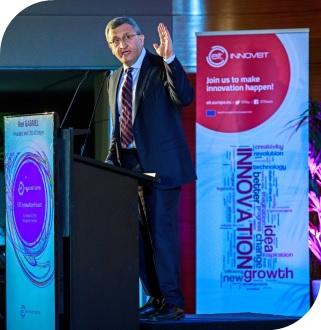“Innovation is something that is satisfying an unmet need” - Interview with Ken Gabriel, President and CEO of The Charles Stark Draper Laboratory

We met with INNOVEIT 2016 keynote speaker Ken Gabriel, an experienced entrepreneur and founder of MEMS technology, to get his thoughts on innovation, entrepreneurship and his own illustrious career.
Innovation is something that is satisfying an unmet need. That’s the real origins of innovation; people are trying to do something that they can’t do right now, or they’re trying to do something significantly better.
Well, I think they’re essential for Europe’s future, but I also think they’re essential for everyone’s future. The world is a much smaller place, we are increasingly interconnected economically and socially, and innovation is becoming important to staying competitive. If you’re not innovating with speed and agility, then it’s a good as standing still – you’ll be left behind.
For example, with my start-up Akustica the original parts were from Japan, some of the processing was done in Germany, they were packaged in the Pacific Rim and then sold all over the world. Ultimately my company, an American start-up, was bought by Bosch – a European firm. So a company in one part of the world can actually touch many other parts of the world. It’s not about the most start-ups or who’s got the most dollars coming from innovation economies.
I’d say that, increasingly, you have less time to innovate. When we weren’t so tightly connected as a world, you had a leisurely amount of time to identify the unmet need, develop your idea and commercialise it. Now, if you’re seeing it, there are probably 10 other people around the world that are seeing it too. I’d say the environment for innovation has gotten better because there are more people taking part in the innovation process. But what that also means is there’s more competition because the barriers to innovation have been going down.
Catch up with the latest news from the EIT Community in the Newsroom.
Subscribe to the EIT Newsletter to get the best of the EIT Community's news in your inbox once each month.
Engage with us



 Share this page
Share this page


